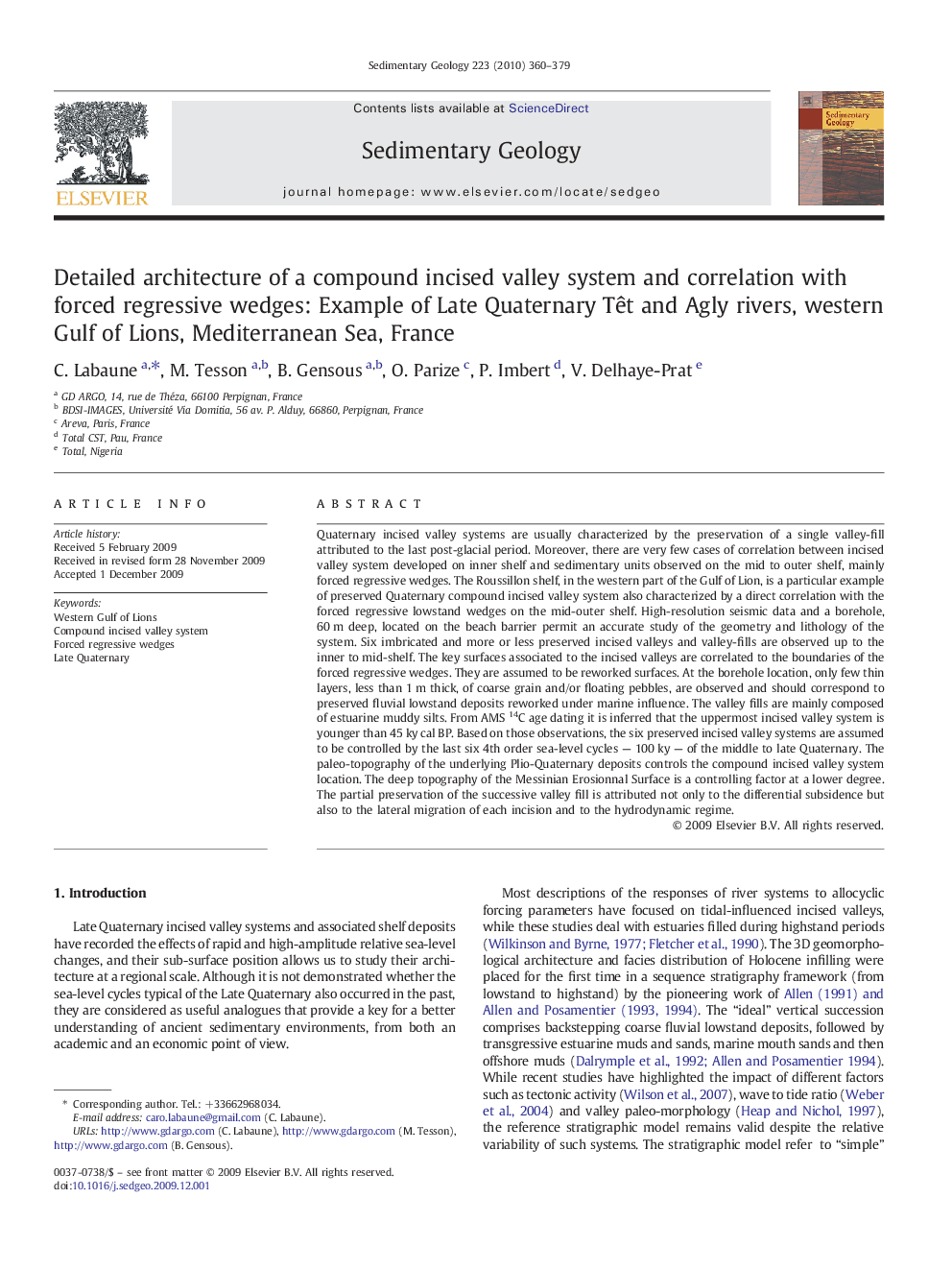| Article ID | Journal | Published Year | Pages | File Type |
|---|---|---|---|---|
| 4690332 | Sedimentary Geology | 2010 | 20 Pages |
Quaternary incised valley systems are usually characterized by the preservation of a single valley-fill attributed to the last post-glacial period. Moreover, there are very few cases of correlation between incised valley system developed on inner shelf and sedimentary units observed on the mid to outer shelf, mainly forced regressive wedges. The Roussillon shelf, in the western part of the Gulf of Lion, is a particular example of preserved Quaternary compound incised valley system also characterized by a direct correlation with the forced regressive lowstand wedges on the mid-outer shelf. High-resolution seismic data and a borehole, 60 m deep, located on the beach barrier permit an accurate study of the geometry and lithology of the system. Six imbricated and more or less preserved incised valleys and valley-fills are observed up to the inner to mid-shelf. The key surfaces associated to the incised valleys are correlated to the boundaries of the forced regressive wedges. They are assumed to be reworked surfaces. At the borehole location, only few thin layers, less than 1 m thick, of coarse grain and/or floating pebbles, are observed and should correspond to preserved fluvial lowstand deposits reworked under marine influence. The valley fills are mainly composed of estuarine muddy silts. From AMS 14C age dating it is inferred that the uppermost incised valley system is younger than 45 ky cal BP. Based on those observations, the six preserved incised valley systems are assumed to be controlled by the last six 4th order sea-level cycles — 100 ky — of the middle to late Quaternary. The paleo-topography of the underlying Plio-Quaternary deposits controls the compound incised valley system location. The deep topography of the Messinian Erosionnal Surface is a controlling factor at a lower degree. The partial preservation of the successive valley fill is attributed not only to the differential subsidence but also to the lateral migration of each incision and to the hydrodynamic regime.
